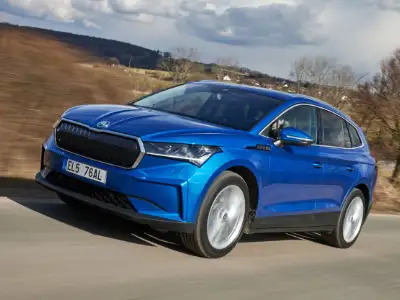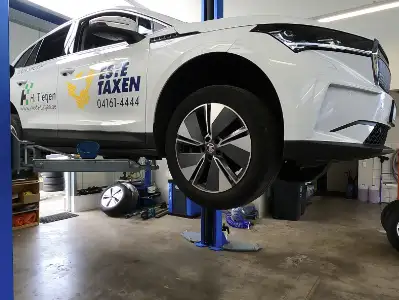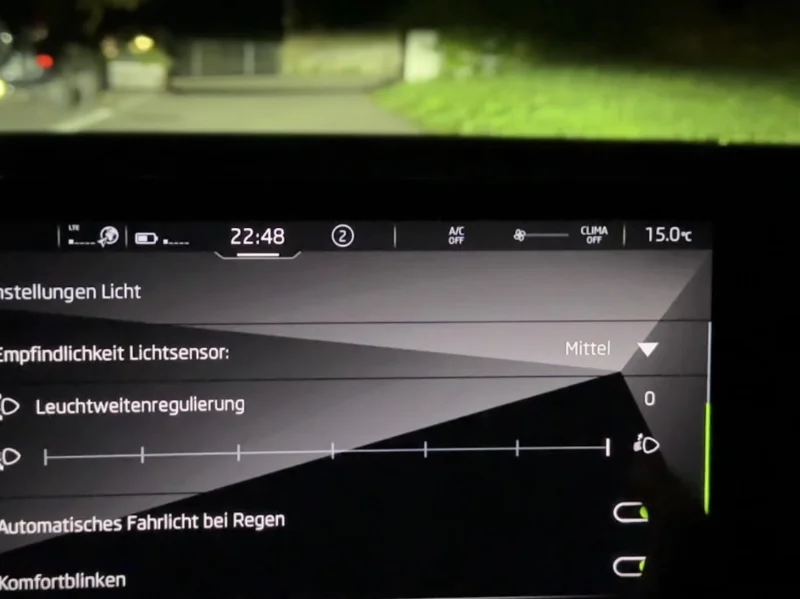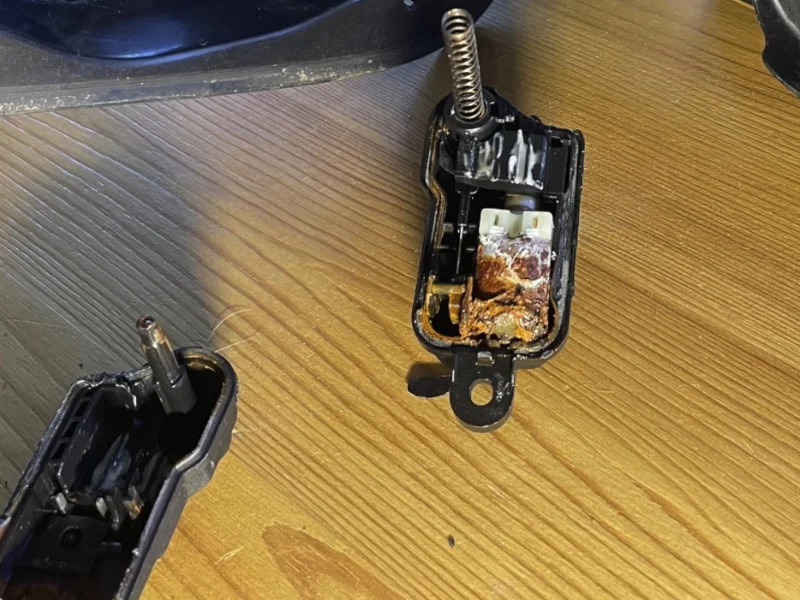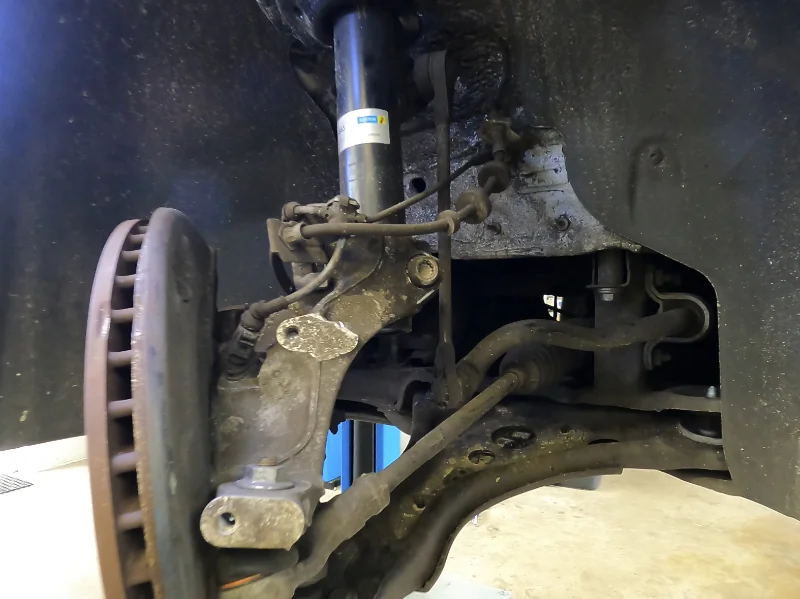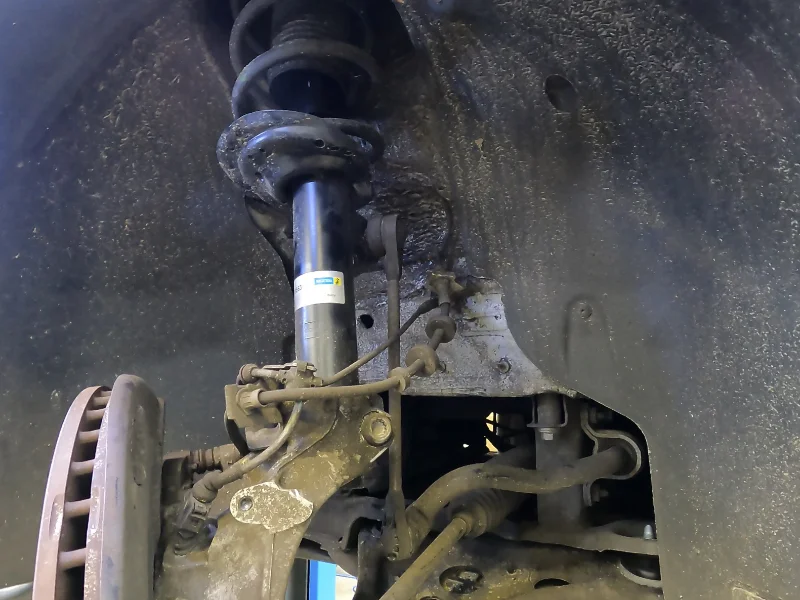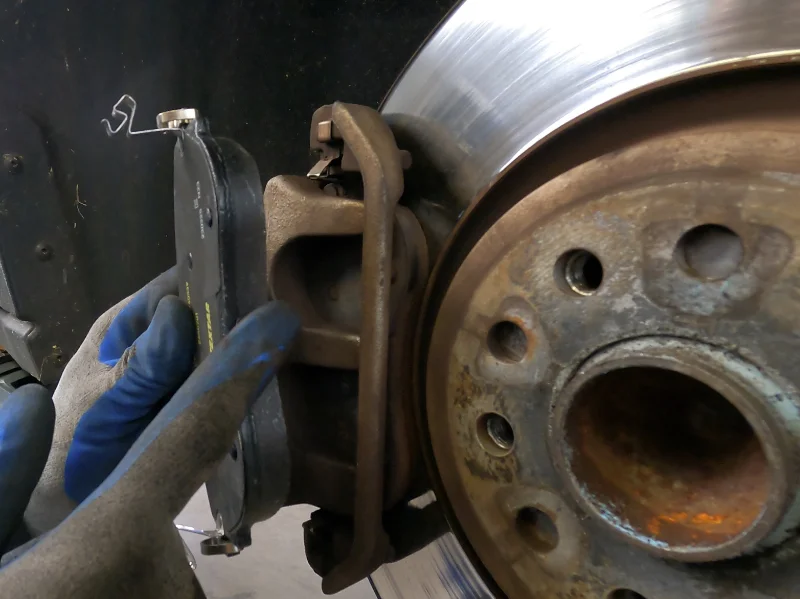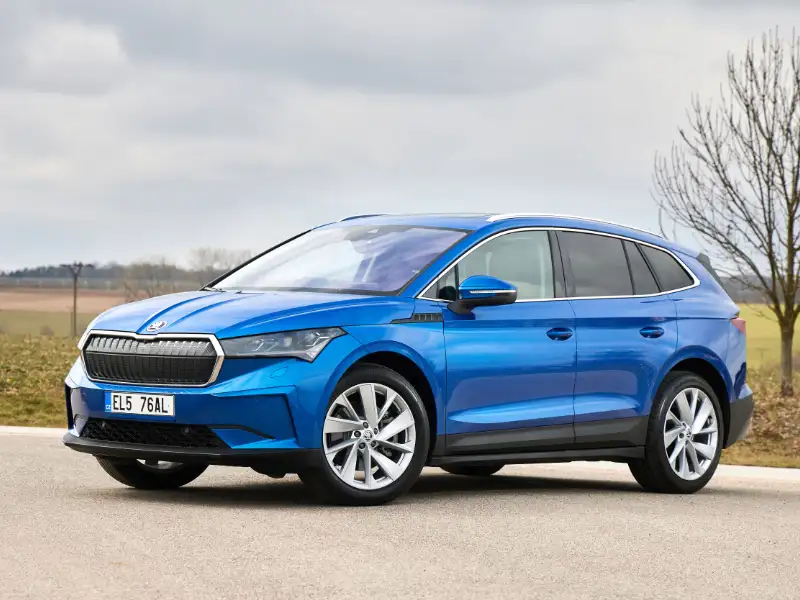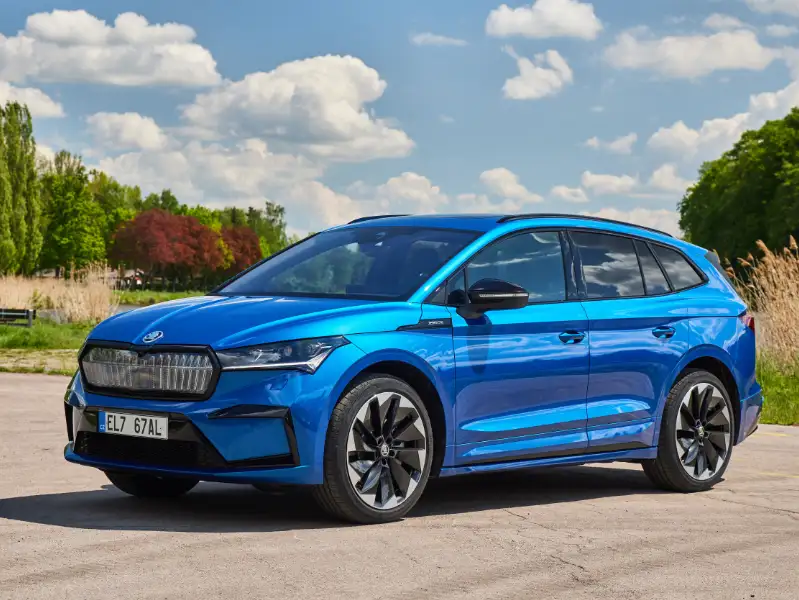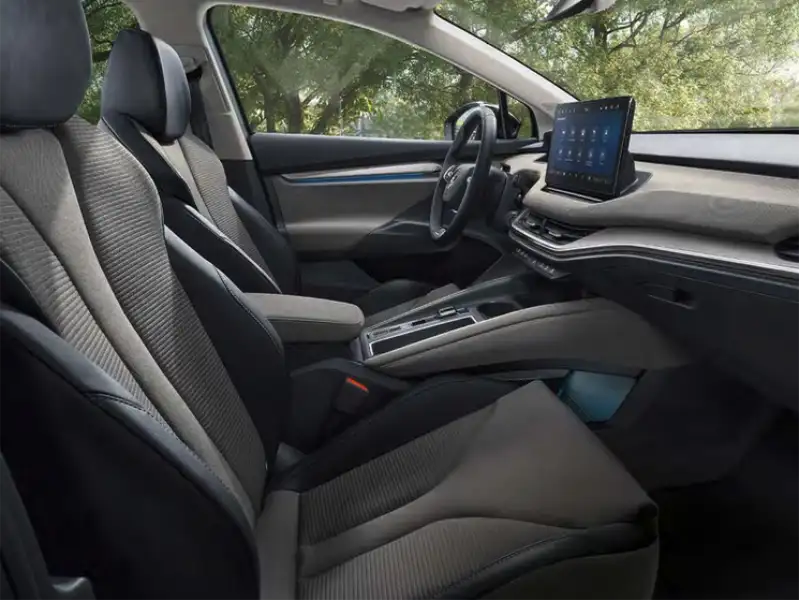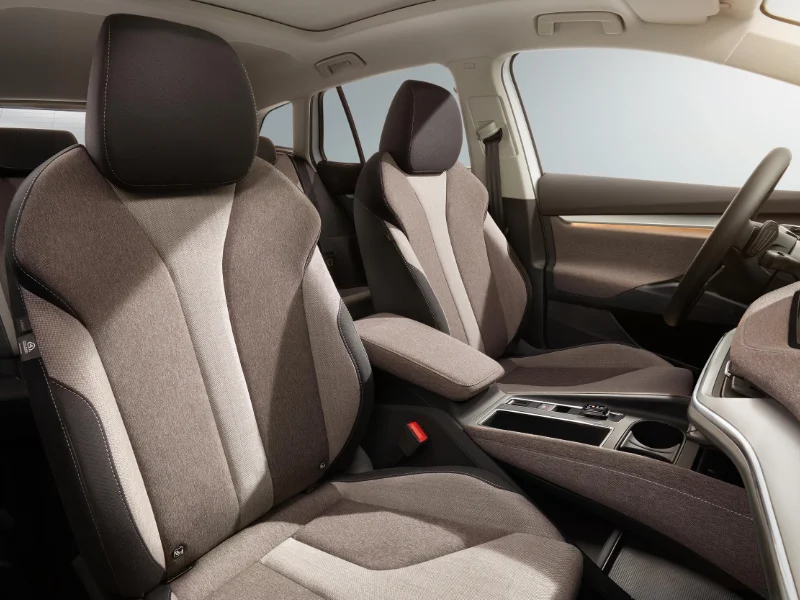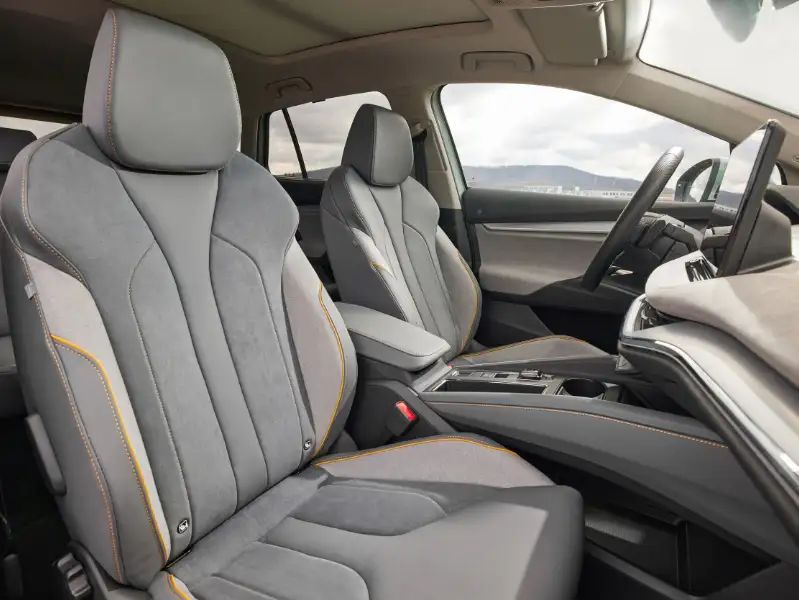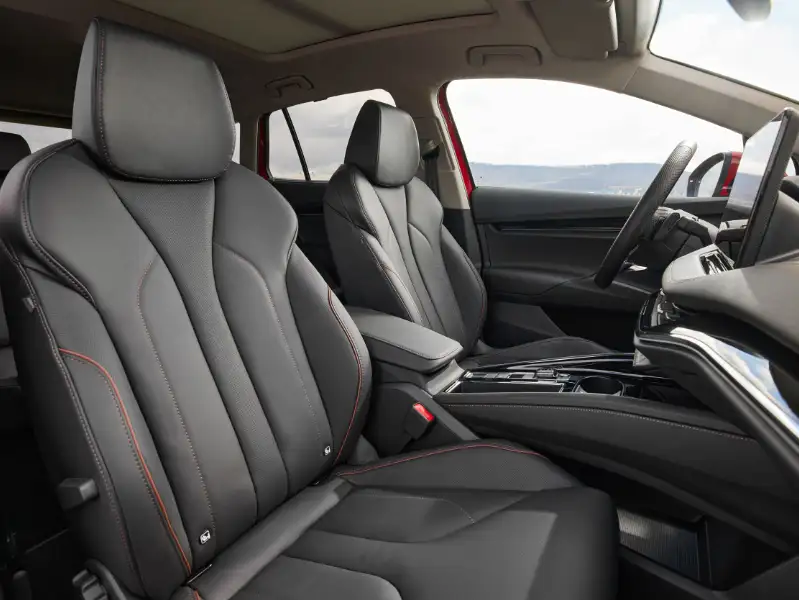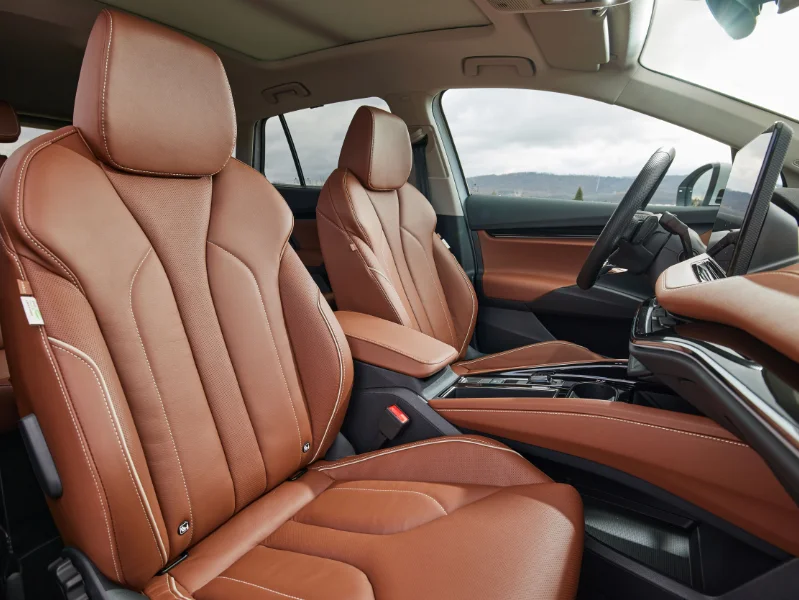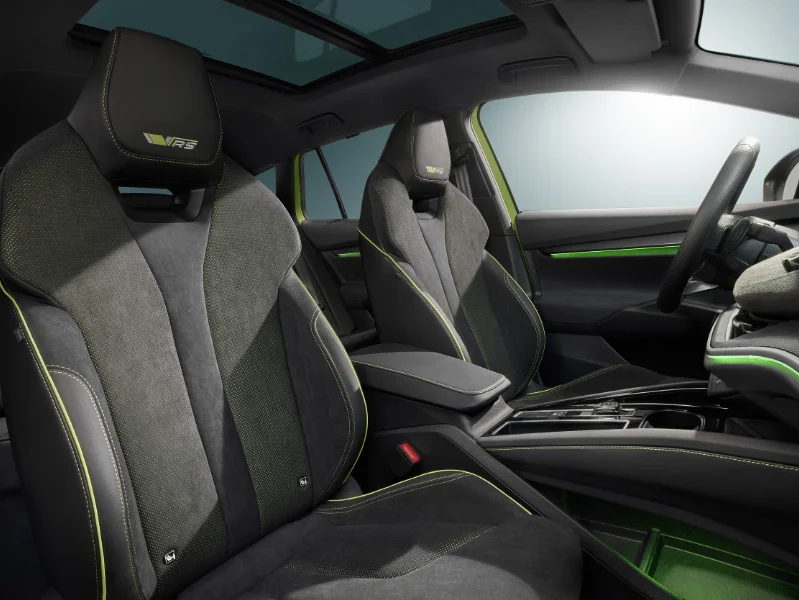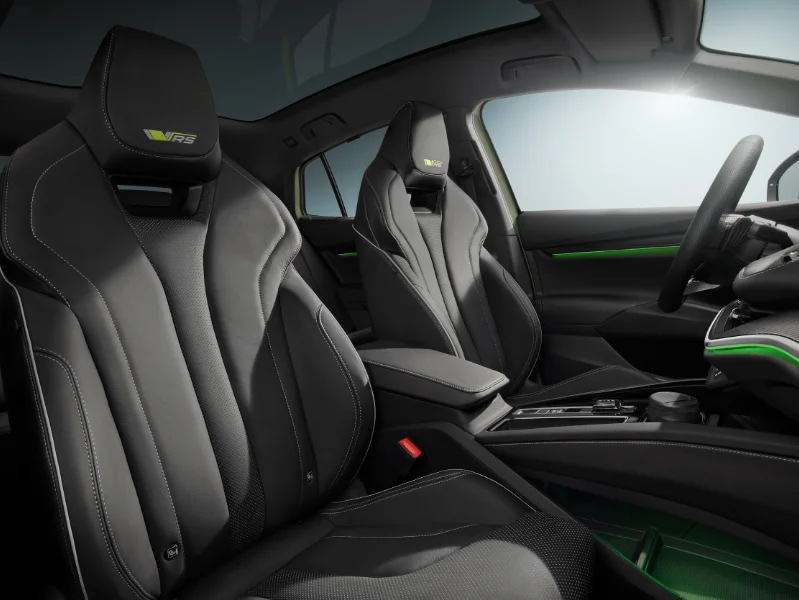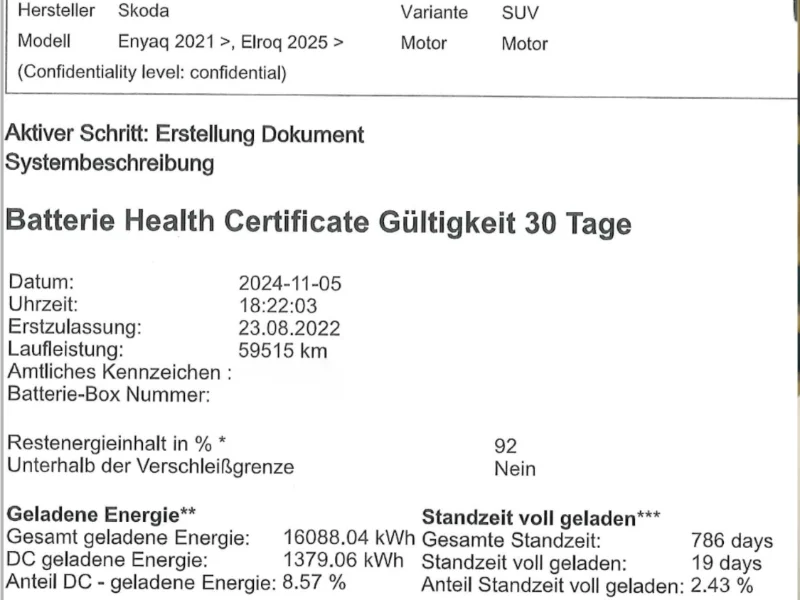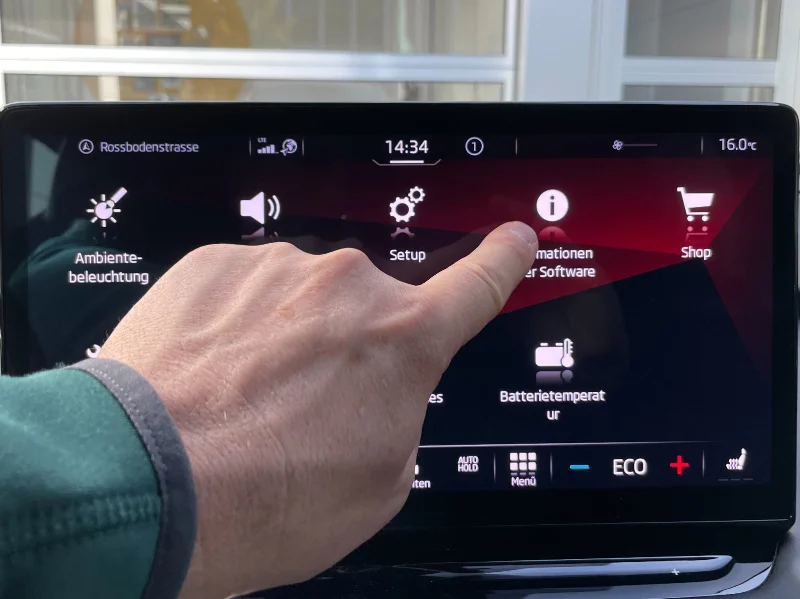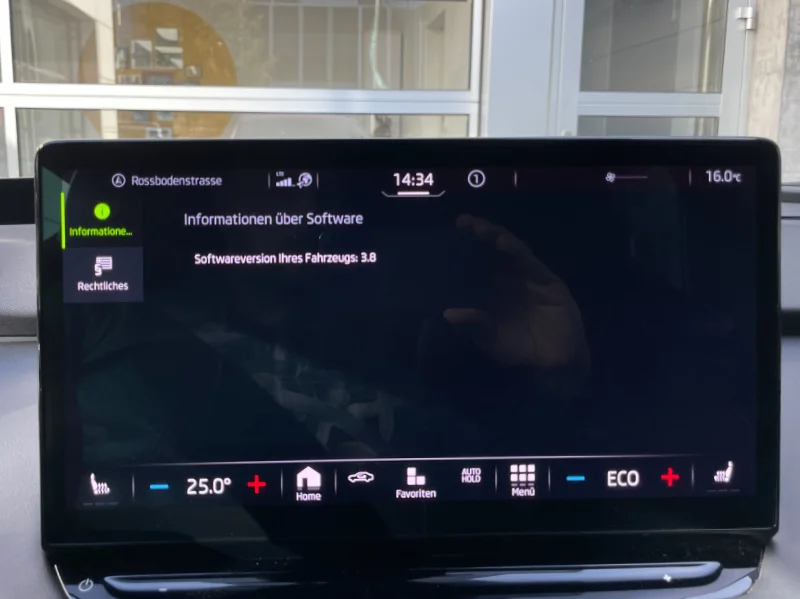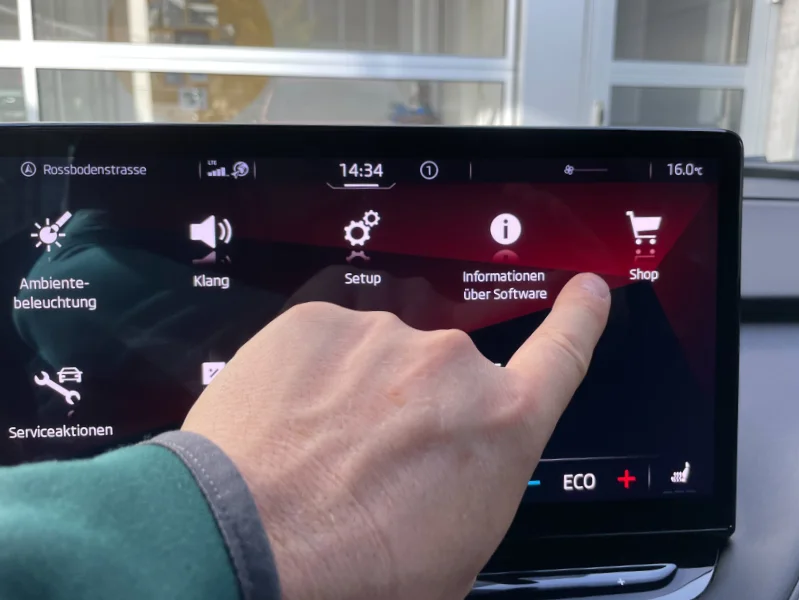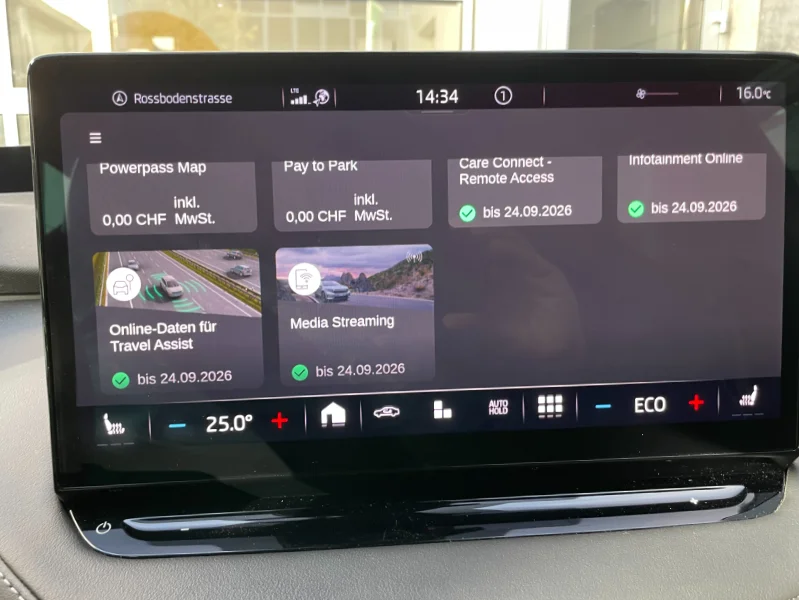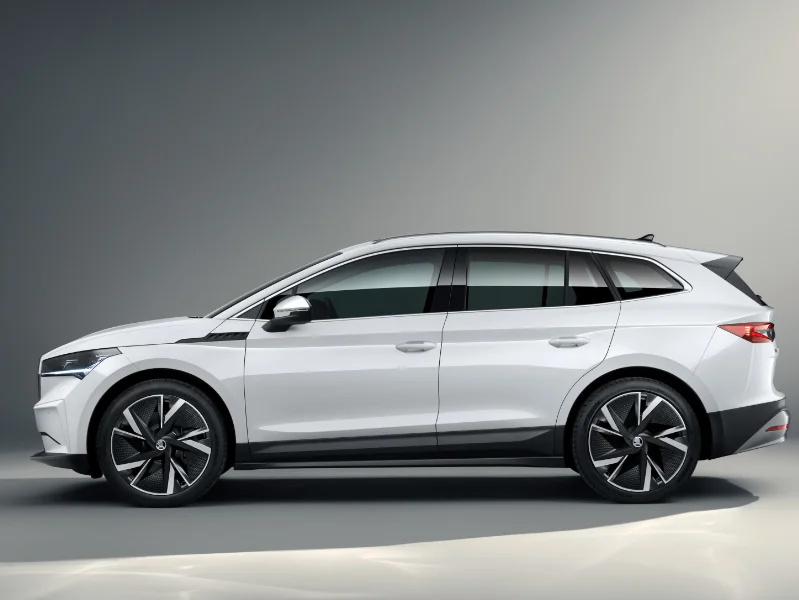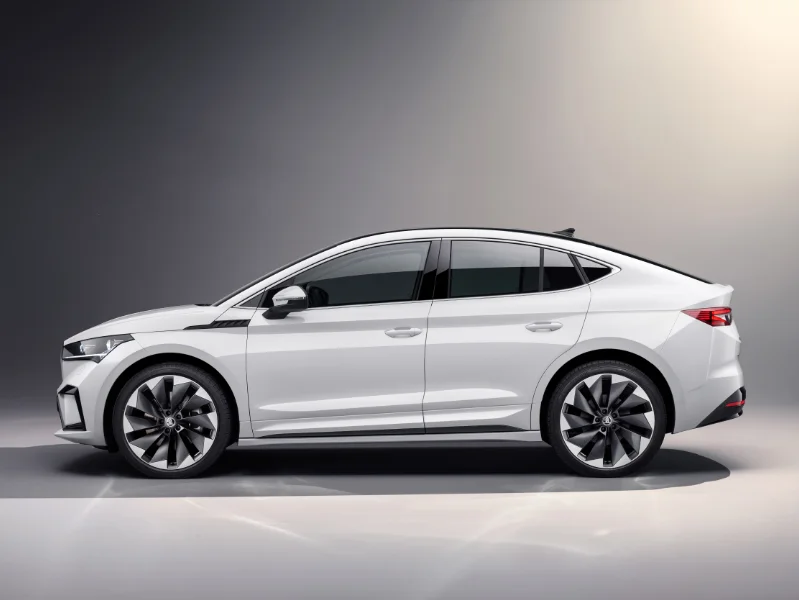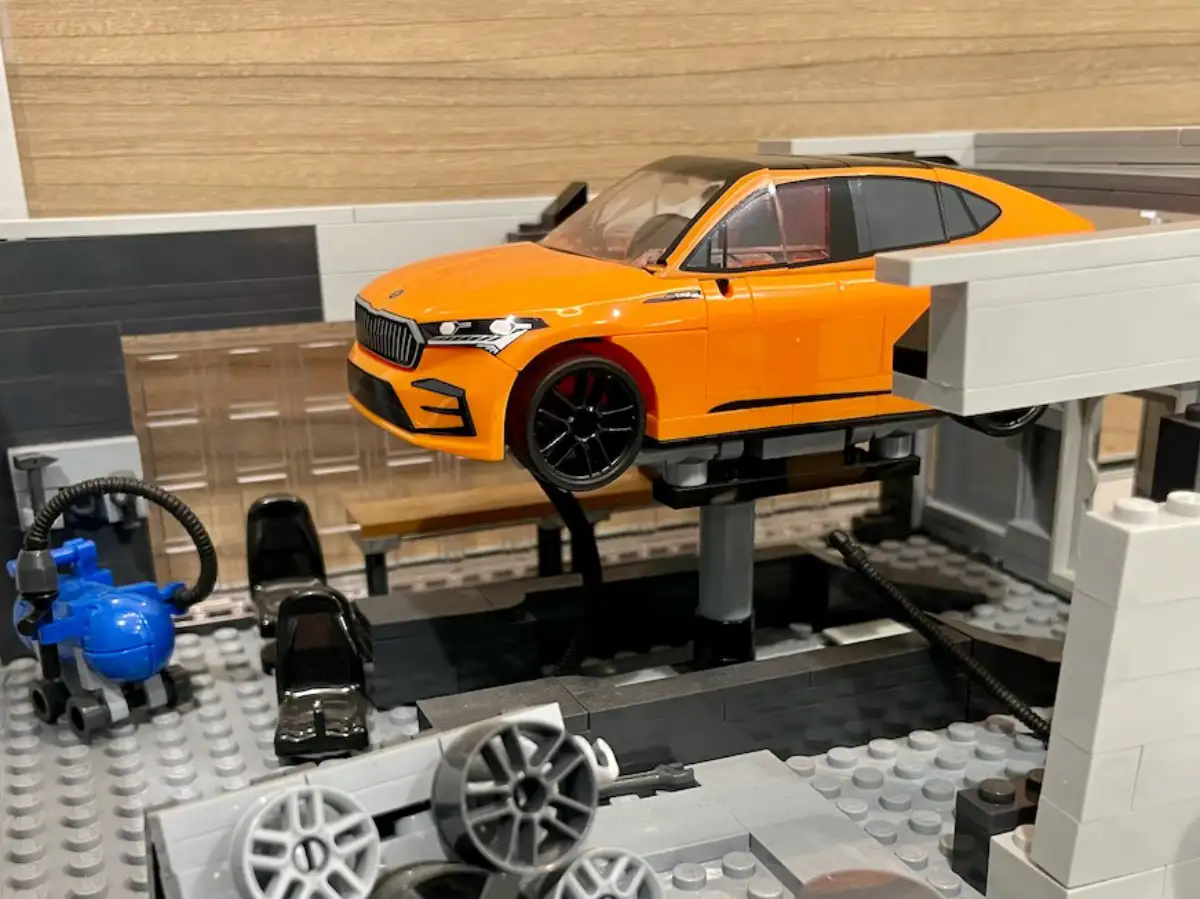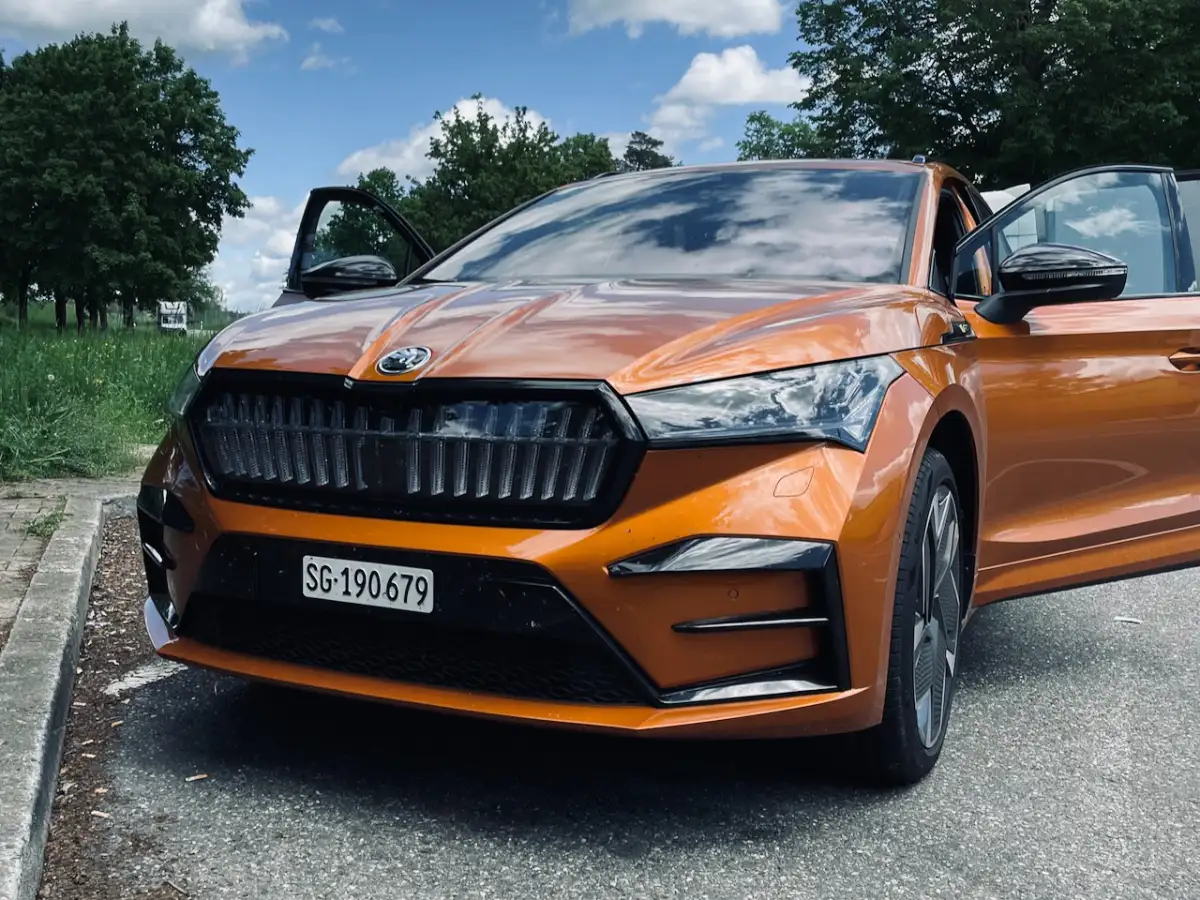The test drive is the crucial moment to find out whether a particular ENYAQ is really right for you. With an electric car in particular, it’s the overall impression of the software, comfort, charging behaviour and driving characteristics that counts – things that are difficult to assess online.
Take your time, don’t let yourself be rushed, and ideally plan a route that includes city, country roads and motorways. Below, I will focus more on the specific features of the ENYAQ iV, rather than all the relevant points of a test drive.
Preparation
Before you start, you should check a few basic things:
- Software version: Check the menu under Software Information. Version 3.7 or 3.8 is ideal.
- Battery condition: If available, ask to see the battery certificate. SoH above 90% is good, above 95% is very good.
- Charging power: Ask whether the extended DC charging power is activated (100–175 kW depending on the model).
- Accessories: Check whether the Type 2 charging cable, possibly the emergency charging cable (optional accessory) and the Simply Clever gadgets (ice scraper, umbrella, etc.) are included.
- Tyre pressure & tread: Quick check – uneven wear can indicate incorrect alignment.
During the test drive
Drive the car calmly. Pay attention to details. The ENYAQ often seems unspectacular at first, but reveals its strengths as you drive.
Software & infotainment
- Start the vehicle several times to experience the system’s start-up time.
- Test the navigation, radio controls, voice control, camera and climate control.
- Check whether the screen’s response speed suits you.
- Test CarPlay or Android Auto or Bluetooth usage with your own smartphone.

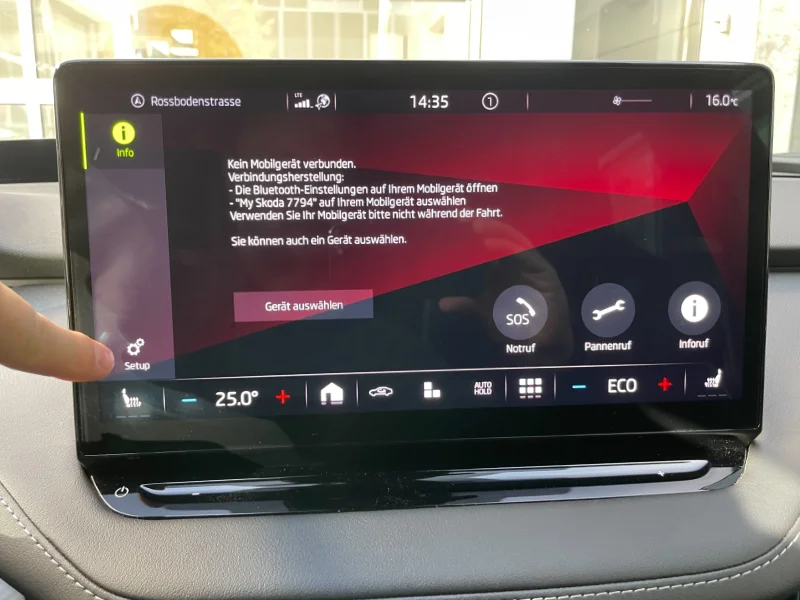


Assistance systems
- On the motorway: Activate Travel Assist, check lane guidance, traffic sign recognition and hand recognition to see if they suit you.
- Adaptive cruise control (ACC): Test acceleration, deceleration and response to vehicles pulling in.
- Parking assistants: Test the rear-view camera and, if available, the 360° view. Also ideal at dusk or in a garage/in low light conditions.


Driving behaviour
- Pay attention to noise and vibrations – the ENYAQ should drive quietly and smoothly.
- Check the chassis tuning: does it suit you or not?
Air conditioning and comfort
- Check that the air conditioning and heating are working properly.
- If possible, activate the seat heating and steering wheel heating.
- Test the visibility (mirrors, windows, A-pillar).
- For vehicles with a panoramic roof: test opening, closing and interior lighting.
After the test drive
When you return, take a few minutes to take a closer look at the vehicle.
- Note the software version
- Check the service history or digital proof.
- Take a photo of the battery certificate (if available).
- Check the tyres for even wear.
- Check the bodywork for paint differences or repainting.
- Test the mirror projections and lighting systems to ensure they are working properly.
- Charging port: smooth operation and no corrosion.
- Interior: wear, scratches, creaking noises.
Simply Clever features
Typical of Škoda, the ENYAQ has a whole host of small but practical details that you should check out when viewing the car. They are often inconspicuous, but are sometimes simply missing in used cars. These small features are not a must, but they often show how complete and well-maintained the vehicle is.
- Ice scraper in the boot lid (left)
- An umbrella in the driver’s door
- Windscreen washer filler funnel in the engine compartment (market dependent)
- Sunglasses compartment in the centre console (from Clever package onwards)
- Storage insert in the centre console
- Storage box in the rear footwell (from Clever or Family Basic package onwards)
- Ticket holder on the windscreen (plastic clip)
- Cargo elements in the boot (2 pieces)
- Variable loading floor and 3 nets (with transport package)
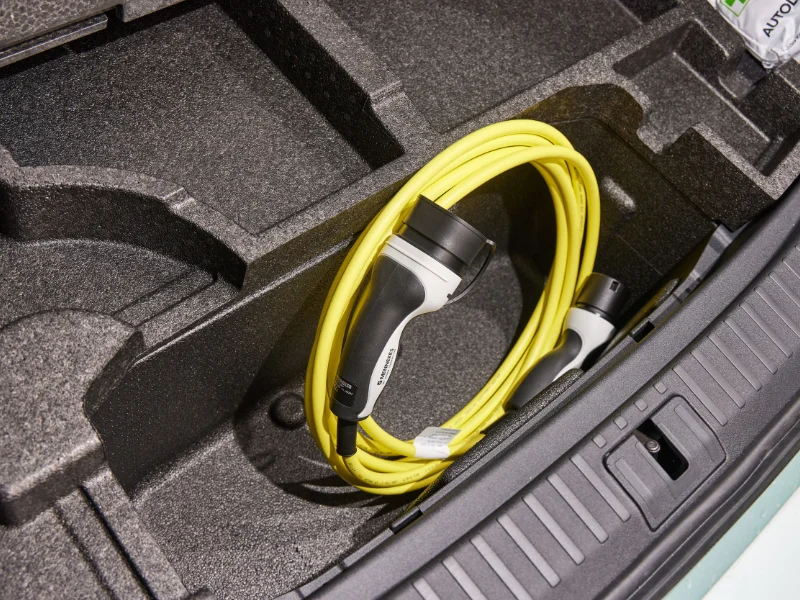

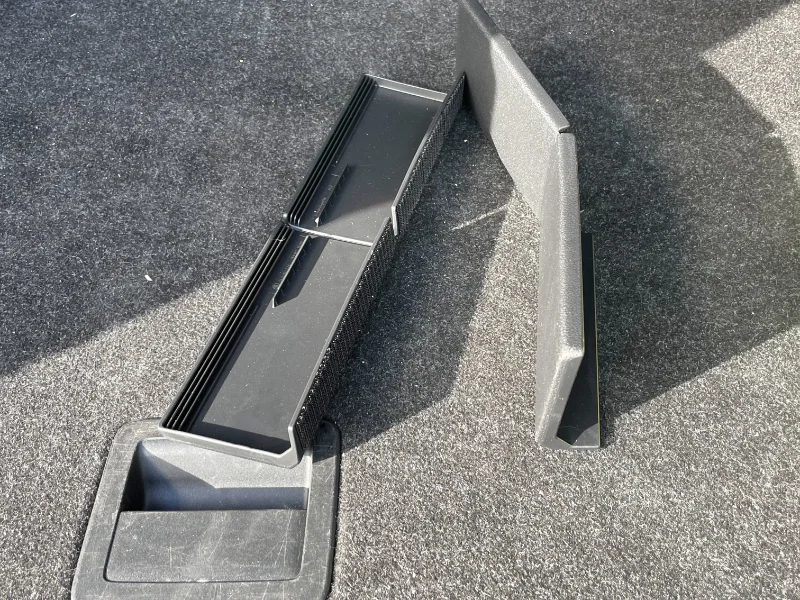
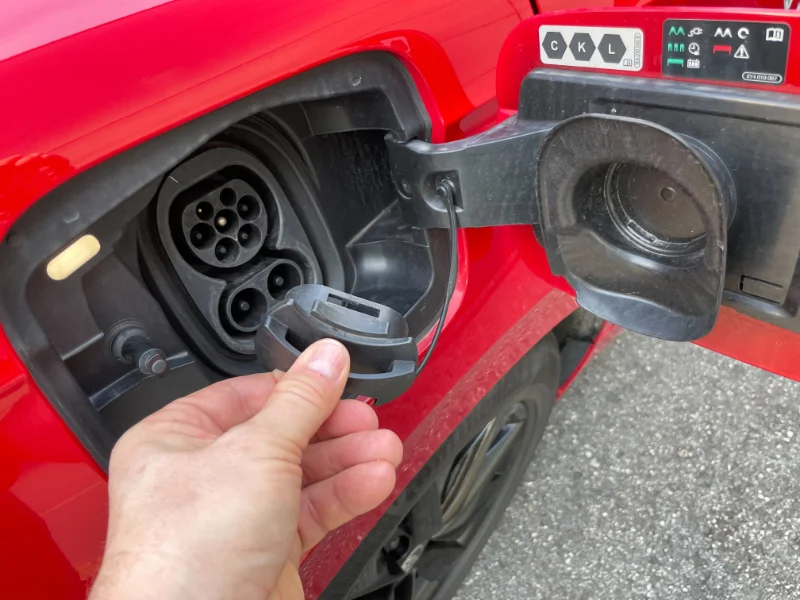
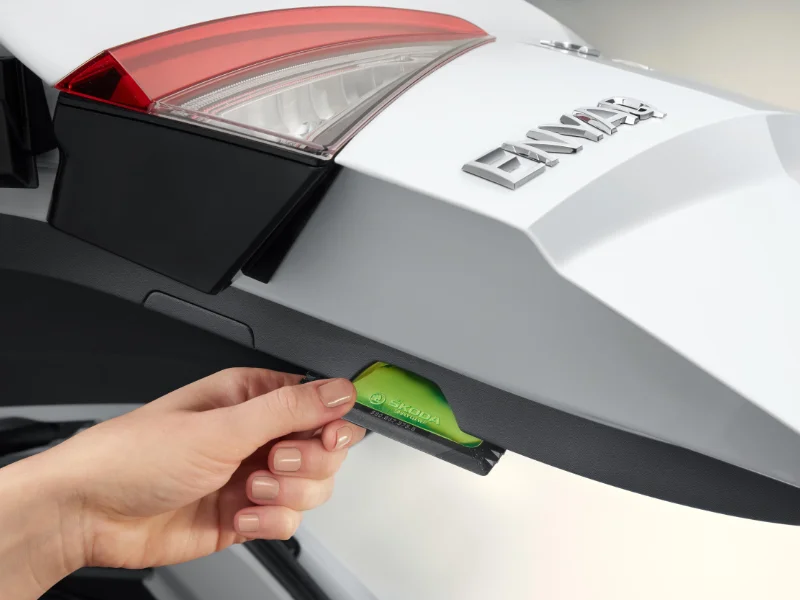
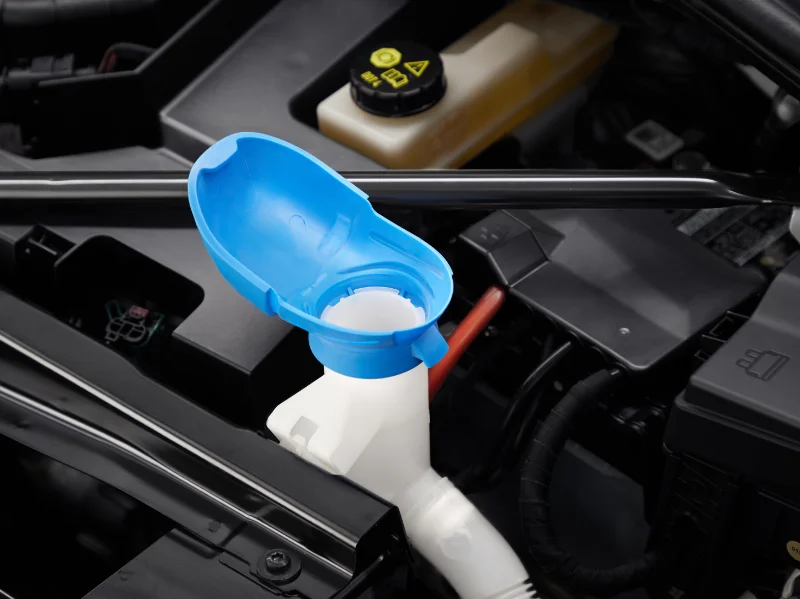
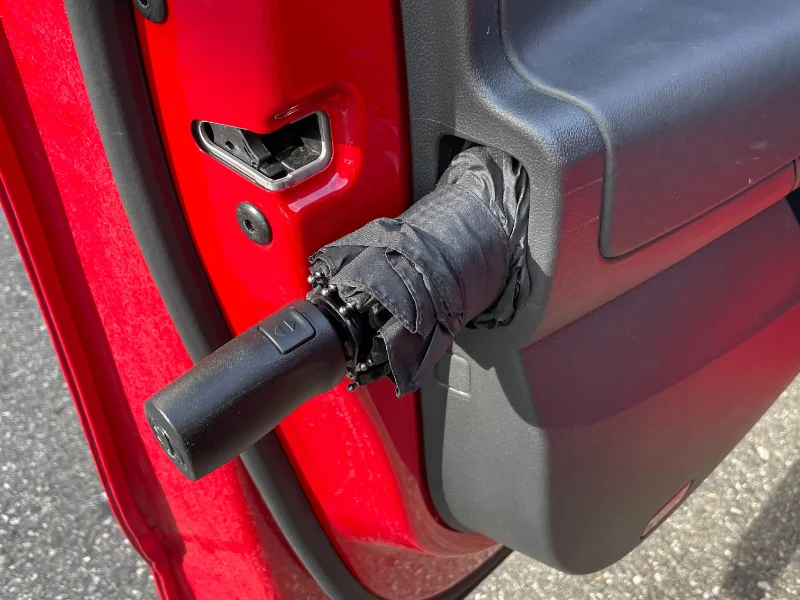

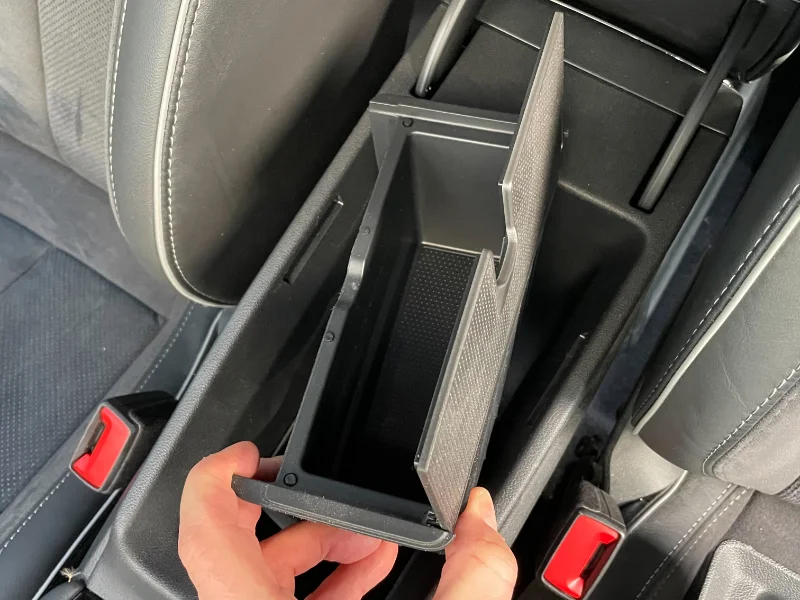



Tip:
The ENYAQ should be reset to factory settings at the latest when it is handed over to you. This will also delete the previous main user. This allows you to register as the new main user. The existing licences from the infotainment system are linked to the car (VIN), not to a user account. If the ENYAQ has not been reset, you can do this yourself.
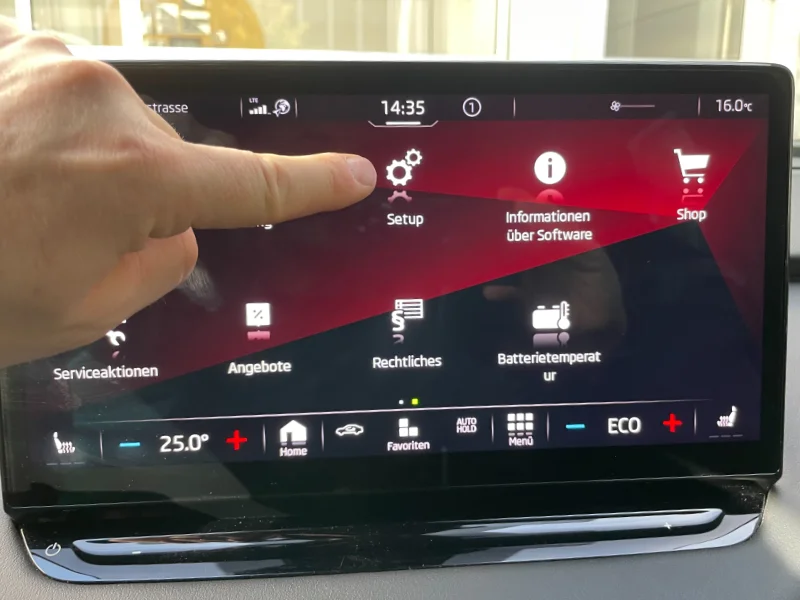
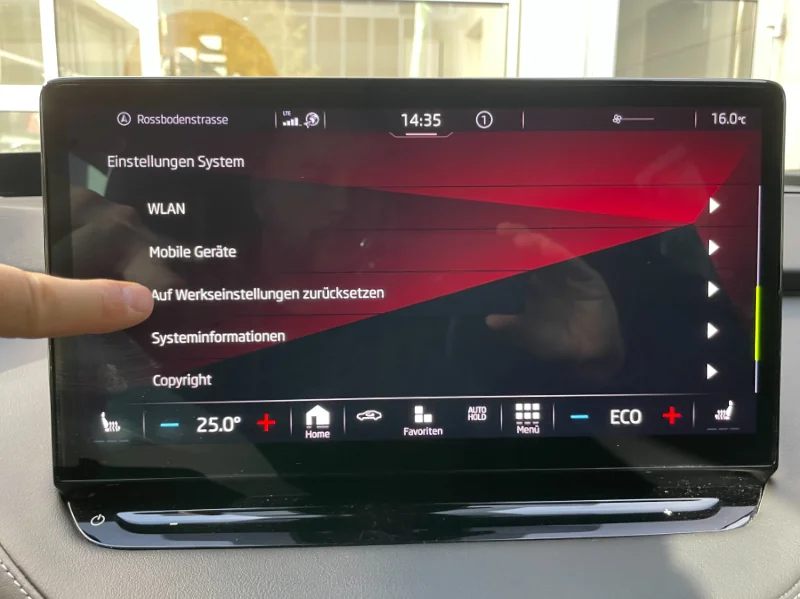
Decision phase
If the ENYAQ ticks all the boxes on your list and the vehicle feels right in every way, that’s a very good sign. If you have any doubts, you should ask for a binding promise of rectification or an update before completing the purchase.
A good test drive should ideally last at least 30–45 minutes, or longer if possible.
This will give you a realistic feel for energy consumption, charging behaviour and everyday ergonomics.
